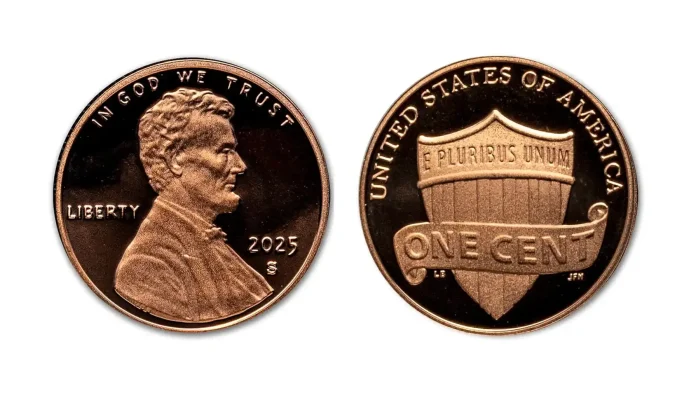By Greg Maresca, 11-20-25
The curtain fell quietly on a 232-year tradition as the U.S. Mint struck the last penny this month in Philadelphia. This ended one of the longest runs in American history. For years the penny had become a costly relic and was more nostalgic than useful and too expensive to mint.
In their 2024 Annual Report, the U.S. Mint reported that the cost of producing one penny was 3.69 cents, more than three times its value. Minting 4.5 billion pennies drained $179 million from taxpayers.
Is there any business that produces a product costing over two times what it sells for other than the U.S. government?
This is poor fiscal policy disguised as tradition. Against a $38 trillion debt, the savings amount to pocket change but it’s a start. It is also a viable litmus test of what is politically feasible in Washington. The delay in addressing this issue underscores the depth of dysfunction in U.S. governance.
Why stop at the penny?
A nickel costs 13.8 cents to mint.
In addition, we also need to rid ourselves of Daylight Savings Time, the two-dollar bill, and the fraction of a penny for gas.
As the majority of transactions via credit cards or debit cards increased, Australia and New Zealand ended minting pennies back in the 1990s. Canada’s Royal Mint stopped in May 2012. For cash transactions, prices have been rounded up by one or two cents; others would be rounded down.
Their economies adjusted proving that practicality trumps sentimentality.
Continuing to mint the penny would serve to subsidize zinc producers while pilfering the taxpayers. If we can’t agree to stop using valuable metals to produce fewer pennies, then what hope do we have when it comes to the big chunks of the federal budget?
By retiring it, the Treasury underscores that efficiency matters even in the smallest denominations. Moreover, eliminating the penny streamlines commerce, reduces inefficiency, and aligns U.S. currency with other Western economies.
It makes sense – pun implied.
A penny could never buy you much but what it lacked in economic prowess it held an outsized place in Americana instantly recognizable both physically and symbolically. Pennies were tucked in every pocket, scattered under couch cushions, and immortalized in Ben Franklin’s wisdom of “a penny saved is a penny earned.” Words that were a creed of a simpler time that leaves behind only nostalgia for a coin that could never buy much but embodied thrift and austerity.
We have traded nostalgia for necessity. But in that trade, something tender slips away. In its place, we gain efficiency, fiscal restraint, and a currency system that reflects reality rather than melancholy underscoring that sometimes, the smallest change makes the biggest difference.
Critics argue that ending the minting of the penny expunges a piece of American life. Symbolic gestures should not come at a nine-figure annual cost. The Treasury’s decision underscores fiscal responsibility as government should not spend more to make money than the money is worth.
The penny will live on as a collector’s item, a teaching tool and a nostalgic artifact. There are 240 billion in circulation, so it’s not going anywhere too soon. Its image of Lincoln remains iconic and its role in American lore is secure. But coins are meant to circulate, not linger as artifacts in our pockets and mason jars tucked away in a closet. The Treasury’s decision acknowledges that currency must serve the economy, not sentiment.
The penny may be gone, but its mythology still jingles. Saving pennies seems almost pointless in our seemingly cashless world. At one time we were “in for a penny, in for a pound,” but that pound costs a pretty penny and the old adage asking for a “penny for your thoughts” now comes with a subscription fee. A hard job was “working for pennies,” while someone who was tight with their spending was a “penny pincher.” Some complain they don’t have “a penny to their name” but still maintain their oversized morning latte.
Such a legacy reminds us that even in a world moving toward a cashless society, irony still holds value, especially when there are plenty of puns to spend my two cents on with no change required.

Mr. Maresca is a New York City native and a Marine Corps veteran residing in Flyover, America.
The views expressed in this commentary are those of the author and do not necessarily reflect the official position of Citizens Journal Florida









